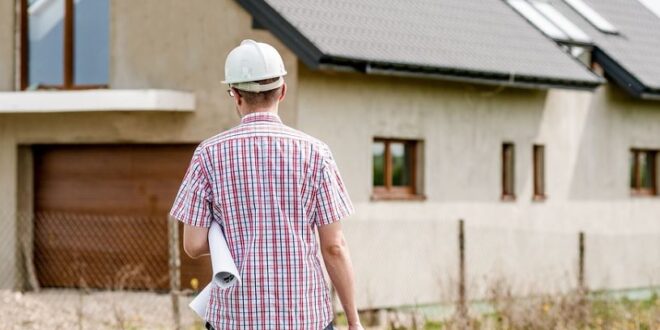Aside from the obvious rewards of building your own home, one of the most talked about advantages is the potential for a serene garden environment. Whilst finding the perfect plot to achieve this goal certainly comes with a unique set of challenges, there are plenty of steps to be taken that can make the process move more freely. So, if you are currently trying to decide where to lay your hopes and dreams, and want to incorporate the perfect garden too, here are some helpful tips to guide you in the right direction.
Research the Market
This may feel like an obvious point, but for people struggling to start, the most obvious thing is not always intuitive. Get on the internet, or in the car, and look at some places. There is so much on offer on the market at various prices, locations, and sizes that you really are spoilt for choice. Of course, it helps if you narrow the search down to things that fit within your budget as this provides a more realistic set of results. This is also a useful step if you have already fallen in love with a place and want to find out more about the local area such as planning permission potential and community restrictions on housing projects.
Find Professional Help
Thankfully, a plethora of services exist currently that can better push you where you need to go. Professionals like land agents understand the procedures behind closed doors, they know where to look and what to look for, and they are a great point of reference for communicating with potential landowners looking to sell up. There is no shame at all in asking for help, and it may just get the job done more quickly.
Find Land for Sale
It is all well and good scouring the web for hours and days at a time searching for potential land to scope into your dream garden nirvana. However, none of that matters if this land is not actually for sale. There are helpful guides out there to assist and direct, like Arbtech’s guide to land buying. There is nothing more disappointing than finding your ideal location, only to go on to find out it has been sold or is not available at the current time, after all.
Explore Areas of Interest
When you do have that list nailed down, it is time to go and physically view the areas. Things appear different in online images than they do when you are looking at them through your eyes when they are right in front of you. It is never advised to commit to buying a piece of land before seeing it and ensuring it is an excellent value purchase, fits your needs and is viable for planning permission. Go and stand on your own two feet where your future home may sit. Tread the local paths, talk to the neighbouring people, and get a feel for life in that area. This is an integral part of the process that lots of people overlook.
Be Open
A large part of this process is finding the strength to be adaptable. Compromising is not always necessary, but an open mind is more likely to find what it is looking for than a rigid one. Being open to suggestions means finding potential in areas you previously dismissed, allowing influence from experts and interested parties and seeing your vision realised in different formats.
There are many different routes to finding the best place for your project, for example, land auctions often yield amazing opportunities that are otherwise unattainable, but this is not the only option. Do not dismiss infill plots either, as despite their dilapidated façade, if you have the money, they are more than worth the labour, alongside also providing ample space to install your greenery.
Decide on Compromises
Of course, there are always going to be compromises to work through. While there are areas that you are allowed to keep as sealed and locked, there have to be points that you are willing to allow movement on. This is not a rigid process. This is one of the most flexible and fluid industries you will ever step foot in, and the ability to compromise on certain low-key factors will take you further than you first imagined.
Consider Buying a House
Lots of self-build projects with a garden at the forefront of the planning process can find their home in pre-existing plots. Do not limit your search to pieces of land, look further afield and consider houses that are already up and standing as well. These can be torn down, modified, renovated in any way you like to whichever extent you like. Furthermore, with a building already there, this consequentially frees up more space in the budget to focus on the outside space. If you chose this option, remember to factor in planning permission as this dictates what you will be able to do with the plot once you acquire it. If the restrictions are unfavourable and do not sync with your vision, find one that will. There are thousands of properties on the market so you will never be short of options.
Use Planning Departments
Go to local planning departments (make an appointment first) and ask them everything on your mind. They are the experts, and they know what is available and what is not. These professionals will be a good point of reference for many factors as you go through this journey. They also have a duty to repurpose derelict buildings, so there are a variety of potential features in this remit.
Building your perfect garden is a dream we can all get behind. Green space is essential for promoting well-being and supporting mental and physical health, but it also a safe space and a haven for so many. A house needs a garden, and there is so much joy that can be found as you step through the doors that it is able to simply make it feel that little bit more like home.
 Gardeners Club The Gardeners Club is a free to join online club for everyone with an interest in gardening and gardens.
Gardeners Club The Gardeners Club is a free to join online club for everyone with an interest in gardening and gardens.





